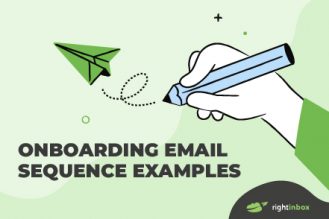If you’re interested in alternatives to Gmail, you’ve come to the right place. Here, we’re going to cover 10 of the best Gmail alternatives so you can choose the best email provider for your unique needs.
Since its release, Gmail has become so popular that it has almost started to become synonymous with “email.” Thanks to its intuitive interface, wide variety of useful features and a Gmail extension for your every need, it’s currently the most popular email provider worldwide, and it doesn’t show any signs of slowing down.
But like any product, Gmail isn’t without its flaws and weak points. In fact, its popularity in itself can be considered a drawback — using Gmail puts your data in the hands of a huge corporation, after all.
The Cons Of Gmail
While Gmail has its advantages, there are also some downsides to consider. Let’s take a look at the major cons of Gmail that you might not be aware of.
- Storage Limitations – You’d love to be able to store an infinite amount of data on your email provider. Of course, unless you pay, that’s not going to happen with Gmail. While it offers a pretty generous storage amount, you will run out of space if you use it heavily.
- Ads – Nobody likes to see ads when they’re trying to be productive or engaging in important conversations. So while Gmail likes to keep itself free with advertisements, it might be an annoyance to you.
- Security – Anytime you’re dealing with a digital or online service, security is of the utmost importance. Since Gmail is such a large player in the space, it can become a target for breaches.
- Not A Lot Of Customization – Sure, Gmail has added customization options over the years. There’s a reason that custom-built applications like Right Inbox exist. That way, you can enjoy advanced functionality.
- Not A Whole Lot Of Support – If you simply looked at the lack of live agents and support resources from Google, you might think that they didn’t really care about their users. While they certainly care at some level, you’re not likely to get any personalized help, even if you’re a paying customer of Google.
1. Posteo
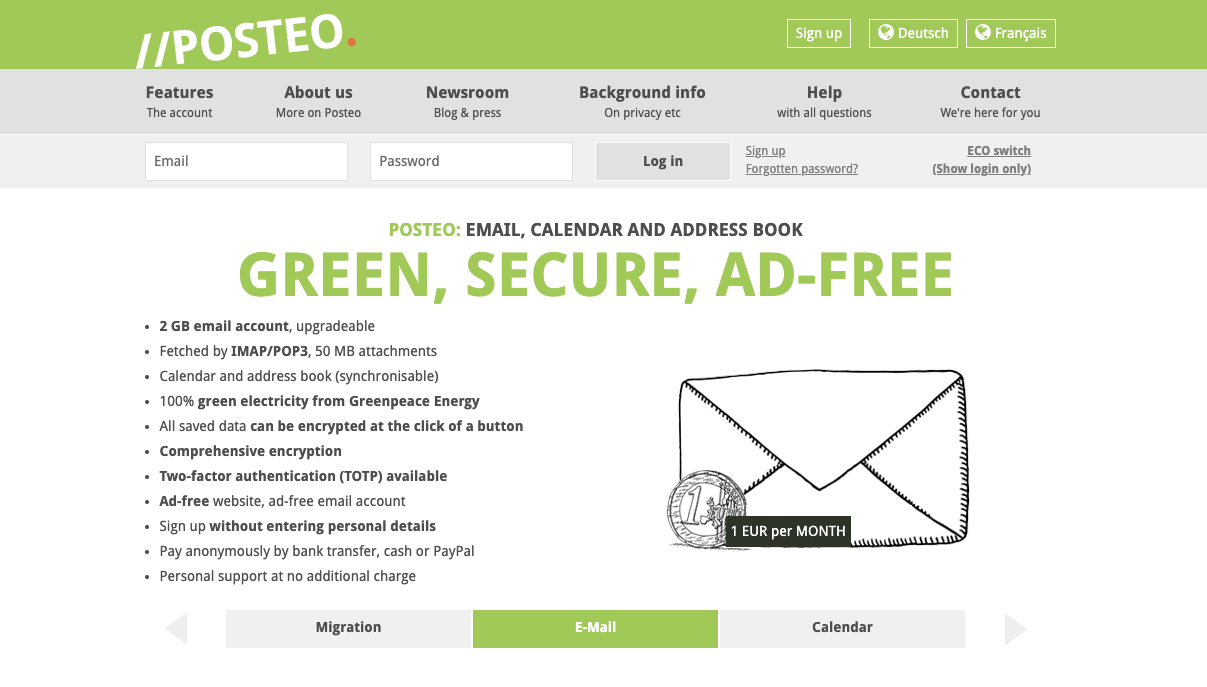
Posteo is a very unique paid email service that combines privacy with sustainability.
All of Posteo’s servers are powered by 100% green electricity from Greenpeace energy, which means that switching from Gmail to Posteo can help you reduce your harm to the environment.
Additionally, Posteo also includes extremely robust encryption features, is a completely ad-free experience, and allows attachments up to 50 MB compared to Gmail’s 25 MB limit. Like Protonmail and Tutanota, you can also sign up without entering any personal information, and you can even pay completely anonymously as well.
However, this service isn’t free. While it is very cheap (plans start at 1 EUR/month), its price is something you will need to take into account.
Features:
- Powered by sustainable energy from Greenpeace
- Top-of-the-line encryption features
- Sign up without entering any personal information
- Pay anonymously
- Ad-free
- Open source
2. Protonmail
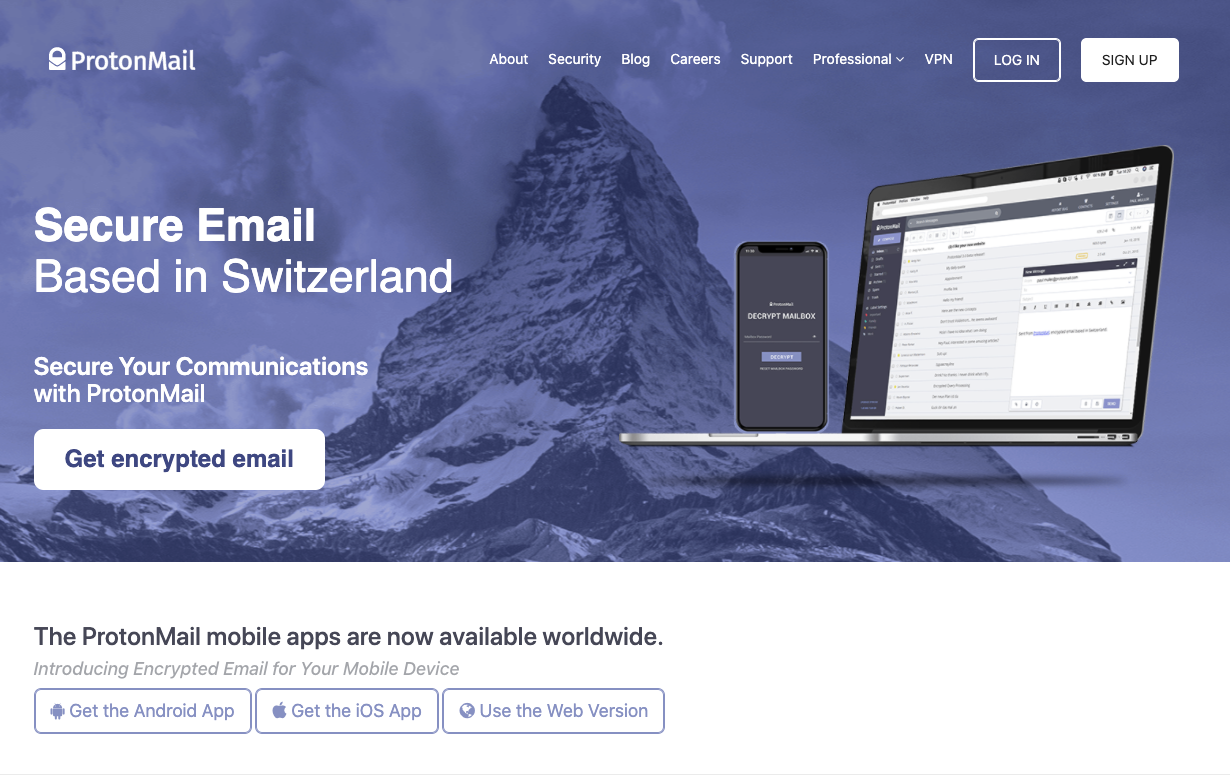
Protonmail is an email provider that places a strong emphasis on privacy. The service was created by a group of scientists that met in Switzerland at the CERN research center.
The service uses client-side end-to-end encryption to ensure that emails are secured before they even reach Protonmail’s servers. This adds an extra layer of security that isn’t available in Gmail.
Additionally, you can sign up for Protonmail without giving any personal information if you want to maintain anonymity. The service can also be accessed via Tor.
Features:
- Unmatched security features
- Sign up without giving any personal information
- Can be accessed via Tor
Additional Reading: G Suite vs Gmail?
3. Runbox
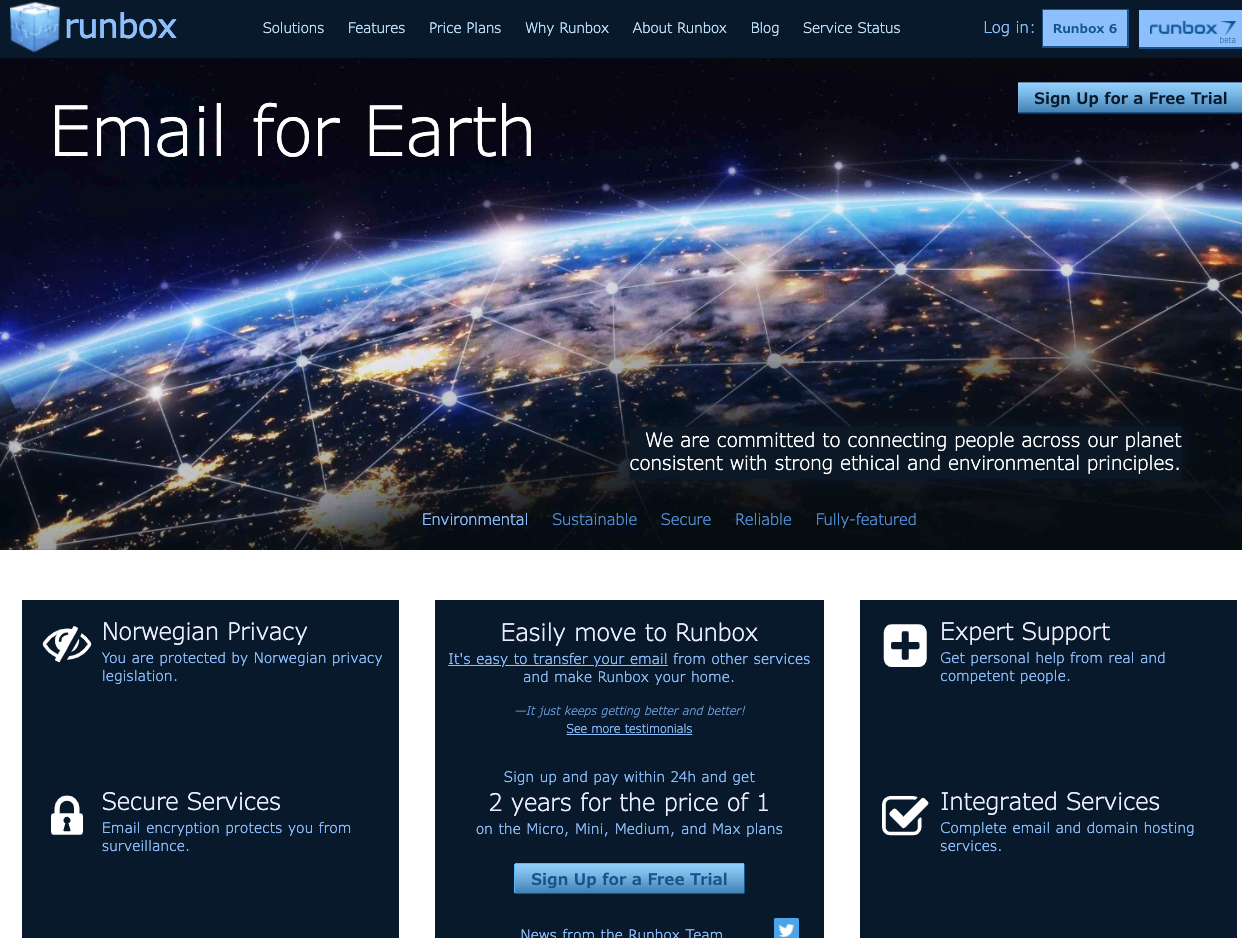
Like Posteo, Runbox is an email provider that offers strong privacy features and a sustainable take on email.
All of the power used to keep Runbox running (pun intended) comes from 100% certified renewable hydroelectricity.
Runbox is based in Norway, which means that you are protected under the country’s very strict privacy laws. It also offers strong encryption features alongside these legal protections.
Unfortunately, Runbox is not a free service, and plans start at $19.95/month.
Features:
- Runs off 100% certified renewable hydroelectricity from clean Norwegian water
- Protection under strict Norwegian digital privacy laws
- Strong encryption features
4. Tutanota
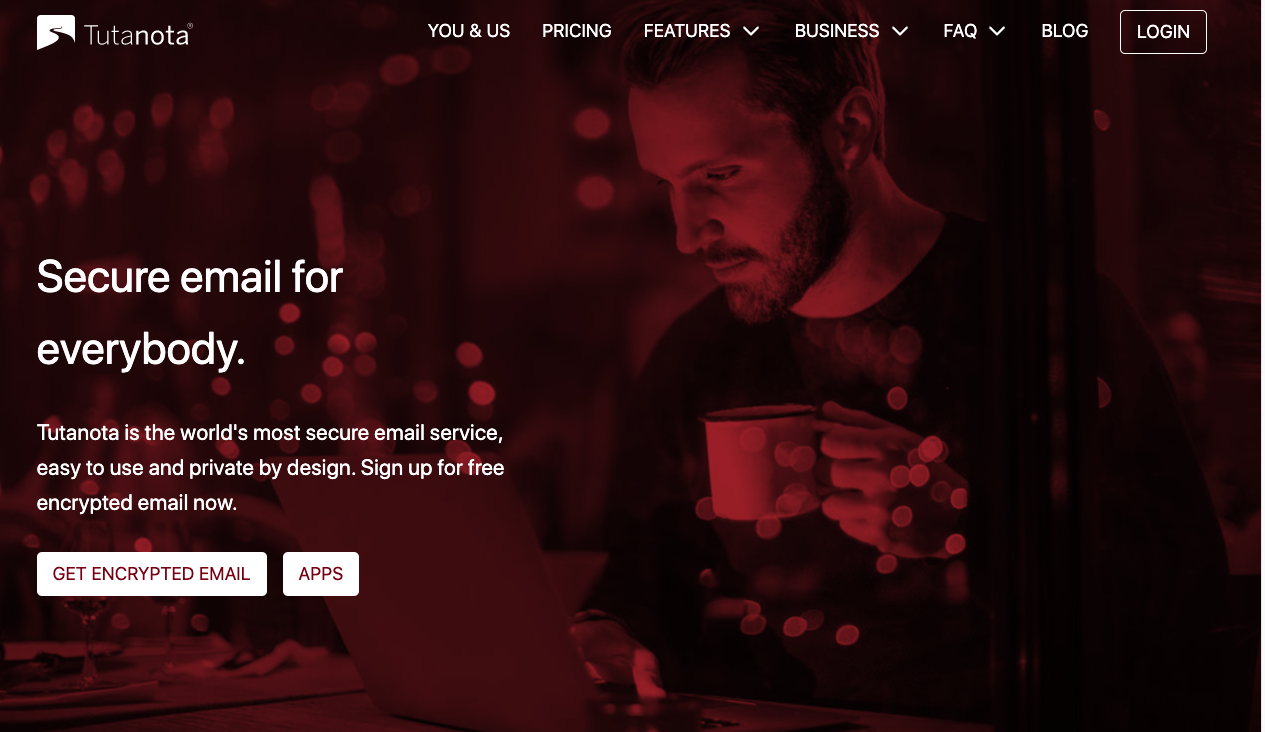
Tutanota is another email provider that takes security very seriously. Like Protonmail, emails are end-to-end encrypted to ensure that your communications are always private. In addition, it’s based in Germany, where digital privacy regulations are much stricter than they are in the United States.
Unlike Gmail, Tutanota is an open-source project, and it does not monetize advertising in any form to stay afloat. Instead, it generates income solely through Premium subscriptions and donations, much like Protonmail.
Overall, its user interface is slightly harder to navigate than Protonmail’s, but it’s still a very solid and secure provider.
Features:
- Open source email provider
- Top-level security features
5. Zoho Mail
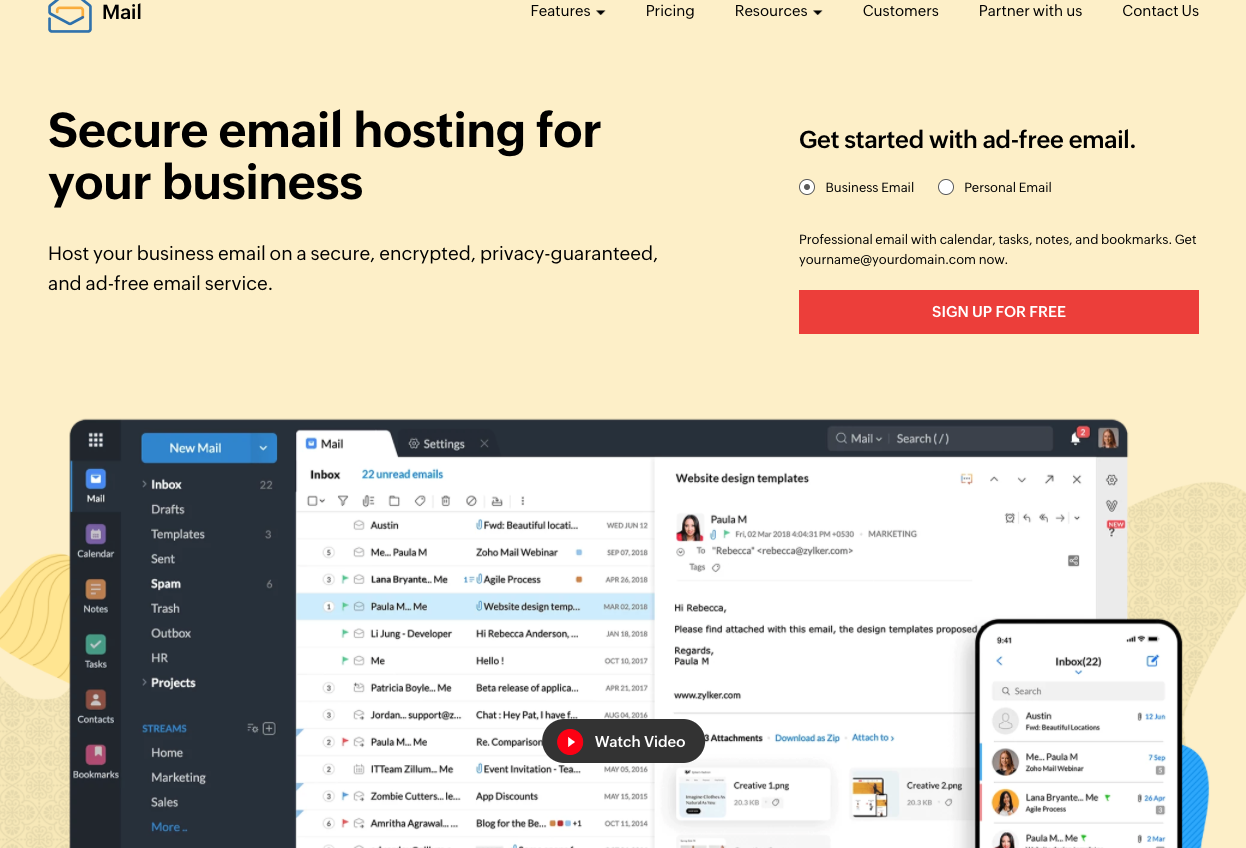
Zoho Mail is an email provider that is aimed primarily at businesses. While it does offer services for personal email as well, that isn’t its main focus.
Like the other alternatives we’ve looked at so far, Zoho also employs end-to-end email encryption. It uses at-rest encryption as well.
Zoho promises a 99.9% email uptime, which is an important feature for business emails.
One of the most appealing features of Zoho Mail is that you can use your own domain name. For example, instead of being yourname@zohomail.com, you can be yourname@yourdomain.com.
Zoho Mail has lots of features you can customize, including retention settings so that you can ensure you meet all company and legal guidelines.
Keep in mind, however, that Zoho is not free. Plans start at $1/month.
Features:
- Strong security features
- Use your own domain name
- High level of customizability
6. Outlook
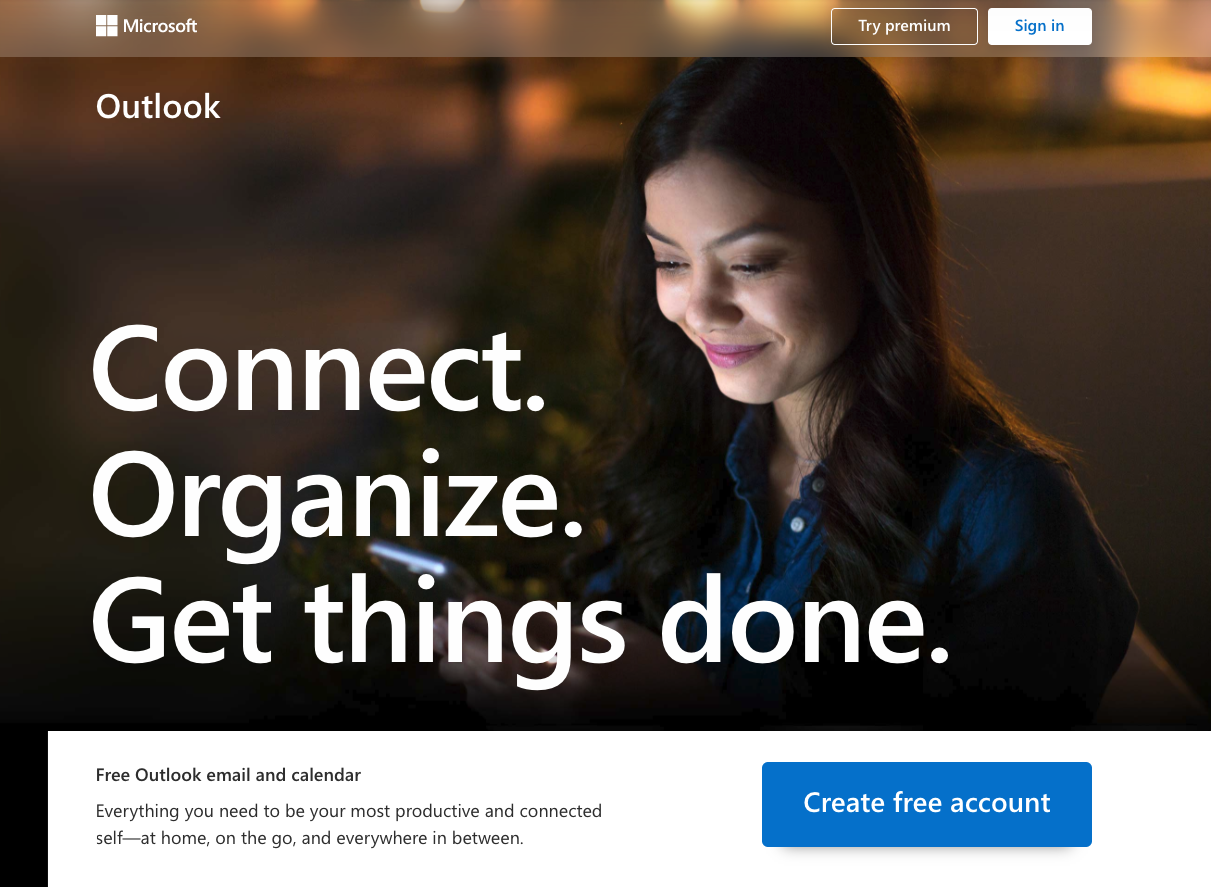
Up until Gmail rose to power, Outlook was likely the most common name in email. While Outlook still remains popular, it isn’t used as often as Gmail is.
However, Outlook is still a very robust platform that was developed by Microsoft. Unlike Gmail, Outlook has an official desktop app. If you prefer to get your email without logging in to a web app, Outlook is a very good choice.
It’s important to note that while Gmail is solely a webmail service, Outlook is both a webmail service and an email client. That means that you can use your Gmail address with Outlook, but not vice versa.
Features:
- Desktop app available
- Can use client with email addresses from any domain
Additional Reading: Gmail vs Outlook: Which Is Better in 2021?
7. iCloud Mail
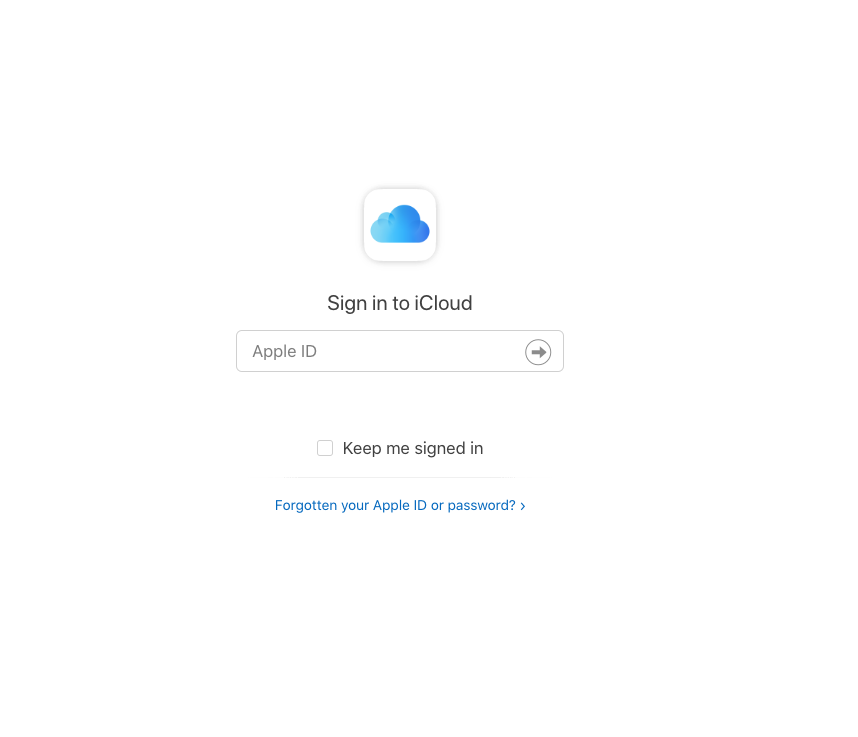
Apple entered the email space with iCloud Mail. The service is very similar to Gmail and Outlook, although some may consider the interface to be a bit less busy and cleaner looking.
The provider is a particularly good choice for those who are already deeply immersed in the Apple and iCloud ecosystems. By using iCloud Mail in addition, you can keep your communications in one place.
Plus, if you’re already a fan of other Apple products and services, like iMessage, then there’s a good chance that you’ll like iCloud Mail as well.
Features:
- Works well with the Apple/iCloud ecosystem
- Minimalist and clean interface
8. Mailfence
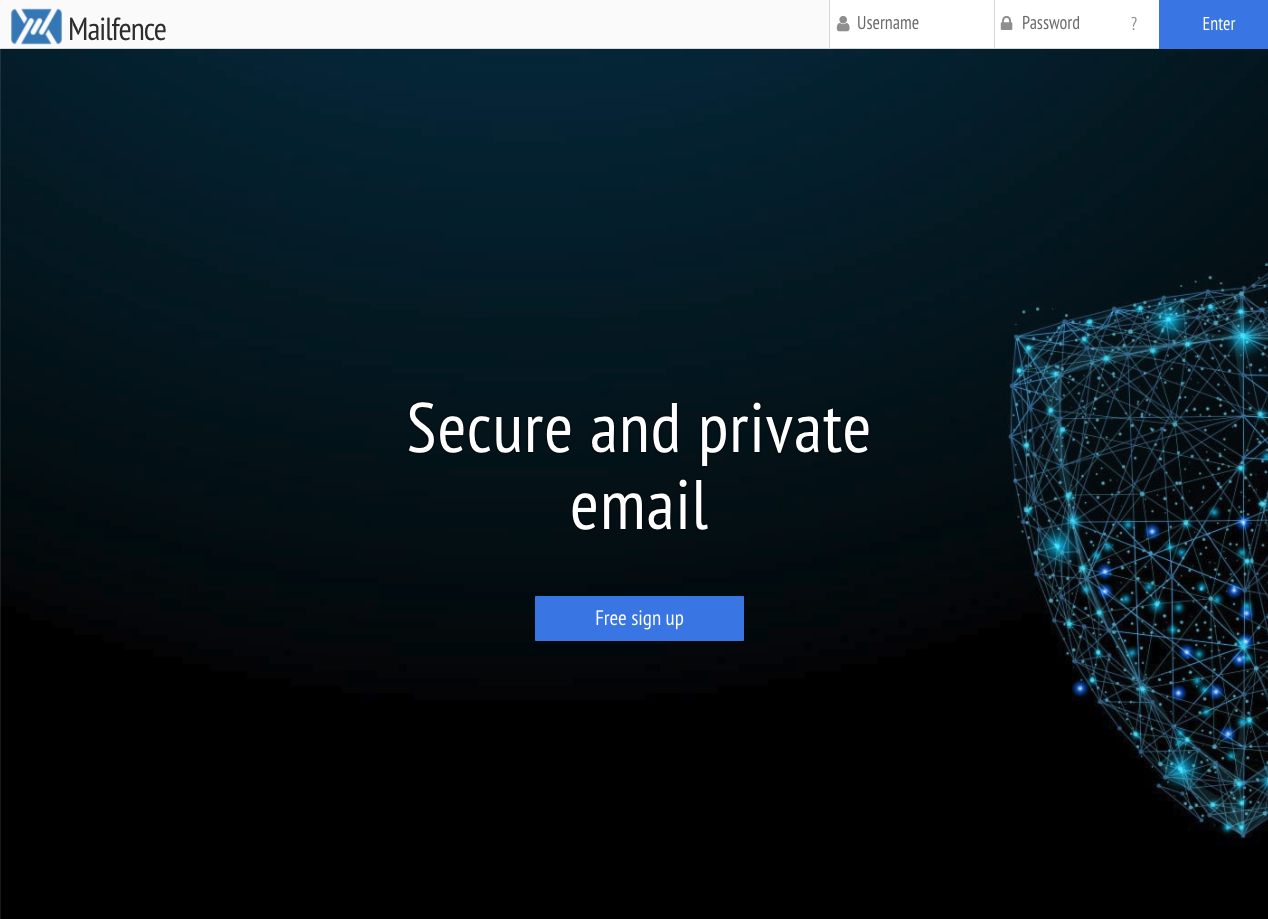
Mailfence is a privacy-centric email service based in Belgium, where you’ll get extra protection from the country’s strict privacy laws.
Mailfence’s emails are secured using true OpenPGP end-to-end encryption. The client is browser-based and runs on most devices.
The provider offers both free and paid plans. The free plan includes up to 500 MB of email storage, 500 MB of document storage. The top-tier Ultra plan includes up to 50 GB of email storage and 70 GB of document storage for 25 EUR/month. The lowest paid plan costs 2.50 EUR/month and offers 5 GB of email storage and 12 GB of document storage.
Features:
- Protected by Belgian privacy laws
- Completely ad-free
9. Yahoo! Mail
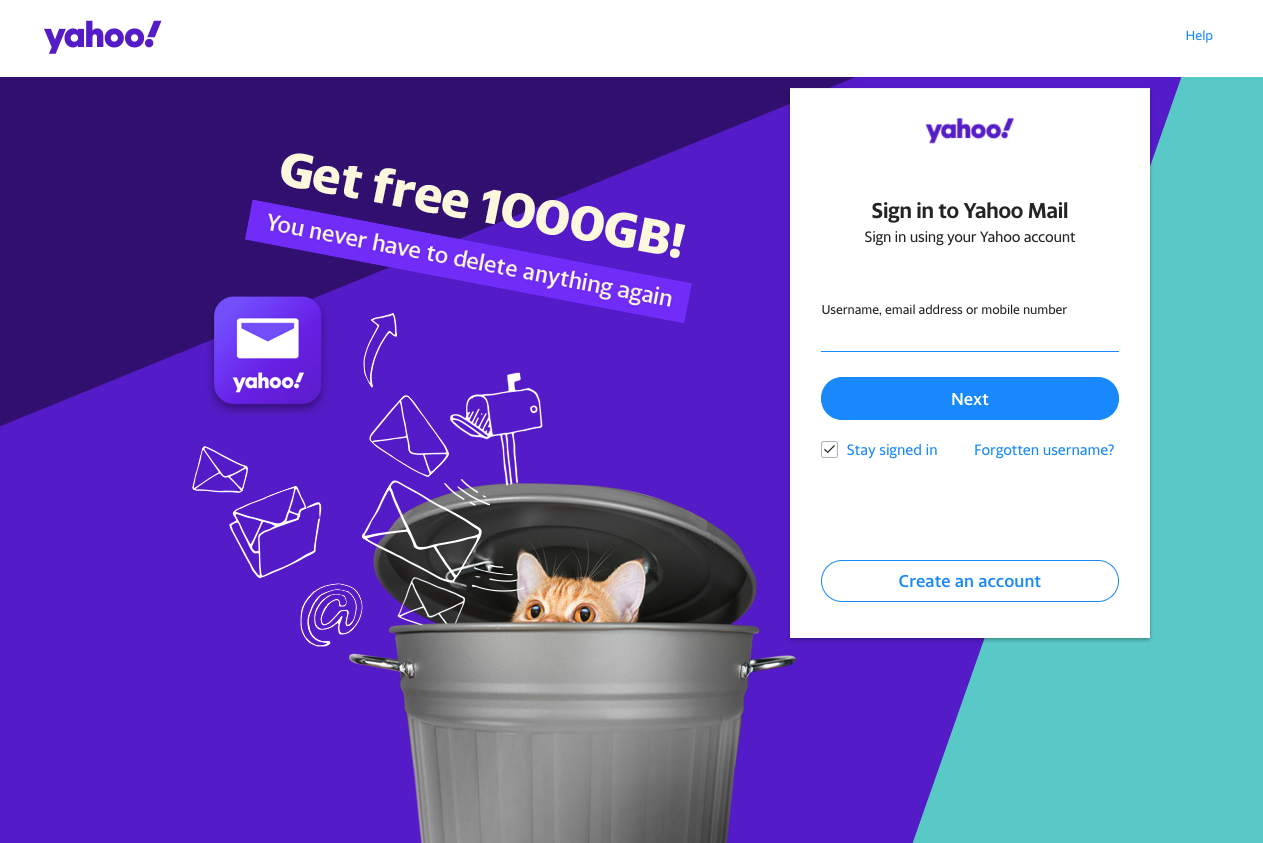
Although Yahoo! Mail is past its heyday, it still offers a solid email experience that deserves to be on this list.
Overall, Yahoo! Mail doesn’t have much on Gmail – its design is more complex and crowded, its pagespeeds are generally slower, and its ads are more intrusive (Yahoo! uses visual ads while Gmail uses primarily text ads). Additionally, it has a worse security track record than Gmail.
However, it does have more themes to choose from, and users who don’t want any ads at all can subscribe for $49.99 year.
Features:
- Completely ad-free experience for $49.99/year
- More themes
Additional Reading: Gmail vs Yahoo Mail
10. GMX
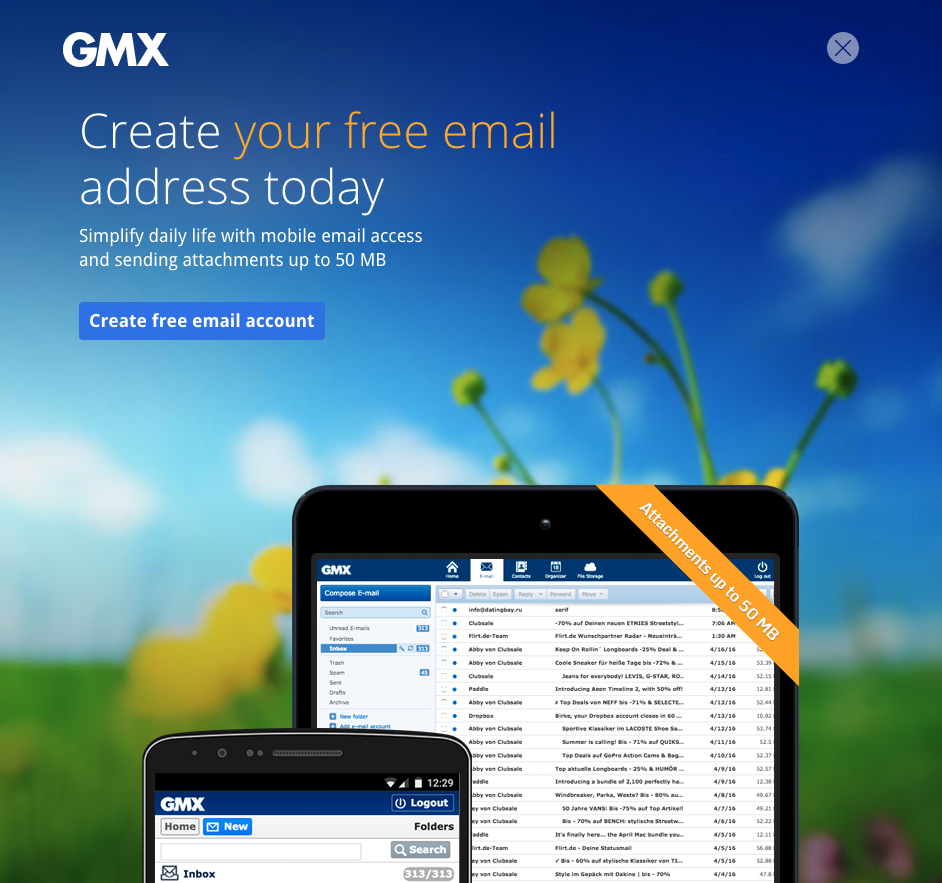
Unlike the providers we’ve covered so far, GMX is supported by advertisements. Unfortunately, that means your email experience will not be ad-free.
For many, this will be quite annoying: every time you log in, you will be presented with a pop up add. This is true even if you pay for the premium plan. In fact, GMX is the only major email provider to do this.
However, GMX is a European company, which means it abides by very high standards for data protection. It uses OpenPGP for encryption, which is similar to what the other providers we’ve discussed use.
Features:
- Uses OpenPGP encryption
- Based in the European Union (Germany)
- Uses ads for revenue (pop ups upon login)
- Send attachments up to 50 MB
11. Hushmail
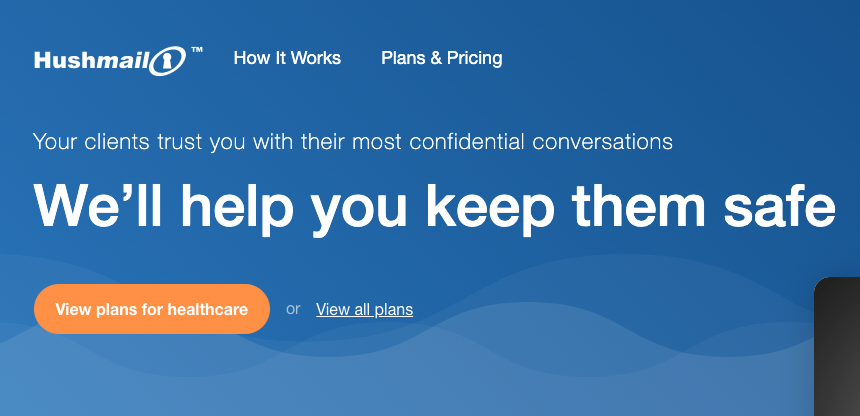
Hushmail has been around for quite some time. It’s known as one of the best privacy-oriented email providers out there today. It uses encryption to protect your clients and yourself.
It even adds encryption to e-signatures, web forms, and more. With a HIPAA-compliant, secure platform, healthcare professionals can confidently use this without worrying about violations. Hushmail comes with an $11.99 per month plan.
Features:
- Apple Mail, Outlook, and Android Access
- Use your own domain name or Hushmail’s domain name
- Use it on web and iPhone
- Secure web forms with secure web hosting
- Customize templates
12. CounterMail
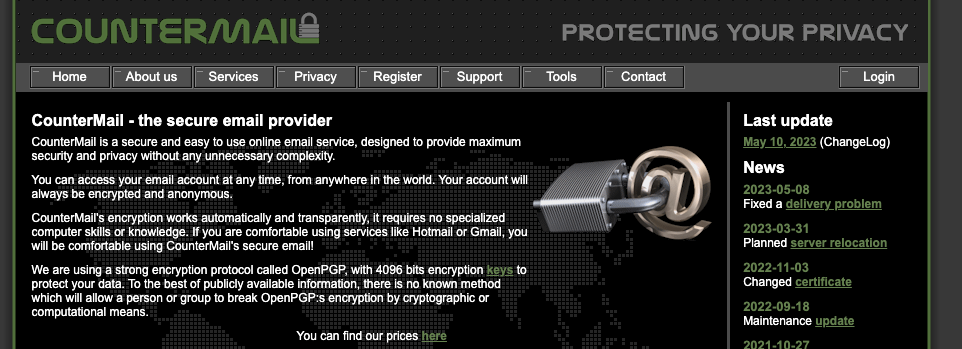
Another great alternative to Gmail, especially for privacy-focused users, is CounterMail. While its website may look like it’s straight out of a 1990 hacker movie, they use only the most modern technology and encryption to protect your information.
Using OpenPGP encryption, you can rest assured that no modern computational or cryptographic methods can break your passwords and encrypted information. It also protects against man-in-the-middle attacks, so your identity can remain secret. A premium account begins at $4.83 per month.
Features:
- Using your own domain name
- Works on Linux, Mac, and Windows
- Dynamic aliases
- Secure forms
- Anonymous headers
The Bottom Line
Gmail is a popular email client for a reason: it’s simply at the top of its game.
However, there are many alternatives that offer compelling features like sustainable power and far more comprehensive privacy and security technologies than a Gmail account.
At the end of the day, you’ll have to decide which features are most important to you and find the email provider that’s the best fit for you.
Track emails, email reminders & templates in Gmail for free
Upgrade Gmail with the features it’s missing
Add to GmailDavid Campbell
David Campbell is the editor of the Right Inbox blog. He is passionate about email productivity and getting more done in less time.



